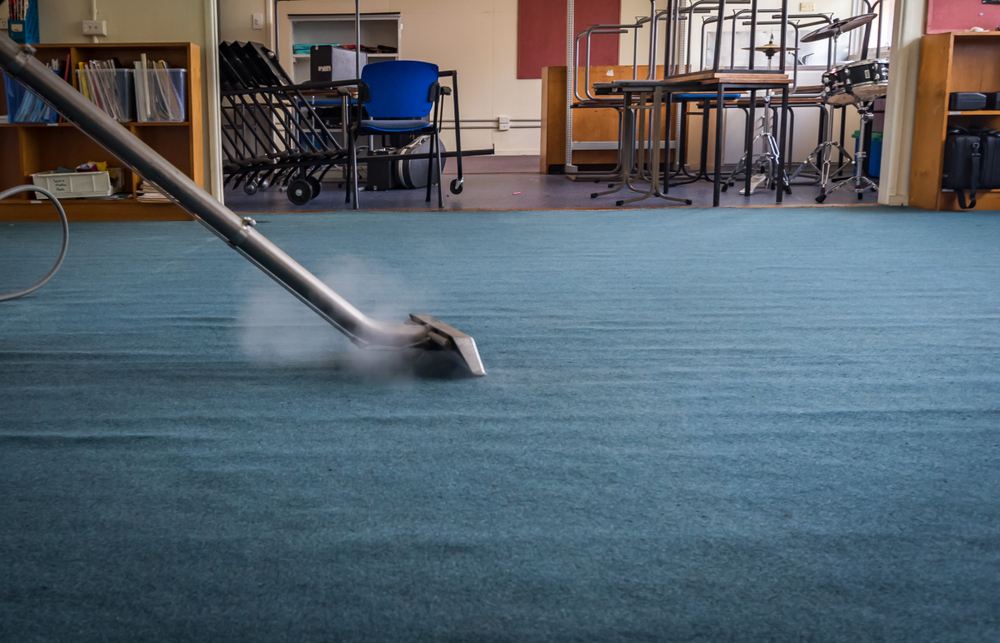If you've ever rented a property, you understand the importance of a security deposit.
With substantial amounts at stake, both landlords and tenants strive for a smooth transition at the end of a lease. Procedures and checklists streamline the moving process, making it more efficient and less prone to oversights. A comprehensive moving-out checklist ensures that both parties part ways on good terms.
Here's a recommended process for both tenants moving out and those moving in.
1. What Landlords Must Do for Move-Out
Moving out is a process that extends beyond just one day. Proper planning and execution are key to a successful transition. Here's what landlords should do:
2. Prior to move-in:
Landlords should do a thorough move-in evaluation to document the condition of the property prior to the tenant moving in. There should be photos and detailed notes.
3. One month before the move:
It’s a good idea to send a very detailed, explanatory letter to tenants that includes a moving-out checklist, as well as a thorough explanation of the entire move-out process to ensure tenants understand expectations. This letter should:
- Emphasize the importance of allowing ample time for necessary cleaning and repairs before moving out.
- Clearly state that any expenses incurred in restoring the property to its original condition will be deducted from the security deposit.
- Provide reassurance that the security deposit will be returned within the stipulated timeframe following a move-out inspection. Timeline is set based on the state where the property is located.
- Encourage tenants to reach out with any questions or concerns and extend best wishes for their upcoming move.
4. One to two weeks before the move:
- Provide a cleaning checklist outlining the expectations for the unit's cleanliness.
- Set a deadline for the removal of tenant possessions and schedule a final walk-through. Depending on the state, there may be rules regarding the timeline for the final walkthrough.
- Arrange for cleaning and maintenance services on move-out day.
5. Day after the move:
- Conduct a walk-through inspection, documenting with photos and notes any damage or cleanliness issues.
- Arrange for necessary repairs and cleaning after the tenant leaves.
- Keep the itemized invoices for the repairs that were done to provide to the tenant.
6. Within 30 days of move-out:
- Mail the tenant's security deposit, minus any deductions for damages, along with a detailed explanation of deductions and itemized receipts.
Renter Moving Out Checklist
Tenants can make their move-out process smoother by following a comprehensive checklist, such as the one below:
- Schedule a move-out inspection with the landlord three to five days in advance.
- Clean floors, walls, ceilings, and ceiling fans, removing dirt, smudges, and grease.
- Wash baseboards, woodwork, and windowsills thoroughly.
- Clean all light fixtures and sanitize bathroom and kitchen fixtures. Replace light bulbs as needed.
- Keep utilities connected until the day after the inspection.
- Clean behind and under appliances, including the stove and refrigerator.
- Wipe down the exterior of appliances and use appropriate cleaners for the interiors.
- Clean inside and outside of cabinets, removing grease and grime.
- Sweep, mop, and dust hallway floors and walls.
- Vacuum carpets and clean closets, shelves, and rods.
- Wash windows, screens, and reattach if removed.
- Remove personal items from outdoor spaces and clear trash and debris.
- Leave curtain rods and brackets unless they're personal property.
- Return all keys to the landlord.
- Test smoke detectors and carbon monoxide alarms to ensure they're functioning.
Move-In Checklist
A seamless move-out starts with thorough preparations during move-in. Here's what landlords should do:
When tenants sign the lease:
- Review the lease agreement with the tenant, ensuring mutual understanding.
- Provide necessary documents and information, including the EPA's Lead Warning Statement, and rental insurance recommendations.
On move-in day:
- Conduct a walk-through inspection, documenting the property's condition with photos and detailed notes.
- Email a copy of the inspection to the tenant as further documentation.
- For tenants aiming to maximize their security deposit return and landlords seeking a hassle-free transition, adherence to these checklists is crucial. Clear communication and mutual understanding pave the way for a successful end-of-lease process. The lease agreement should clearly outline what the tenant is responsible for.
Additional Tips for Tenants
In addition to following the move-out checklist, here are some extra tips for tenants to ensure a smooth transition:
- Communicate Early: Inform the landlord of your intention to move out as soon as possible. Make sure to check your lease agreement for proper notice. Many leases require 30 or 60 days notice to landlords depending on the state you live in.
- Coordinate Utilities: Arrange for utilities to be transferred out of your name on the day of move-out to avoid unnecessary charges.
- Address Minor Repairs: Take care of minor repairs or damages before the final inspection to avoid deductions from your security deposit.
- Document Everything: Keep records of all communications with the landlord, including emails, letters, and maintenance requests.
- Leave No Trace: Ensure the property is clean and in the same condition as when you moved in, following the move-out cleaning checklist provided by the landlord.
Benefits of Following the Checklist
A well-executed move-out checklist is essential for a smooth transition at the end of a lease. Tenants and landlords alike benefit from clear communication, thorough documentation, and adherence to agreed-upon procedures. By following the guidelines outlined in this article, both parties can ensure a hassle-free experience and maintain a positive rental relationship.
Ready to experience a hassle-free property management journey? Partner with Gordon James Realty for expert assistance and personalized solutions. Learn more about our residential property management services here and let us handle the rest!
Contact us today to learn more about how we can support you!


